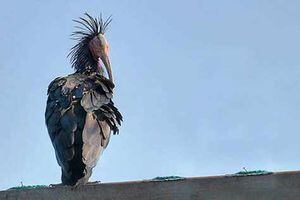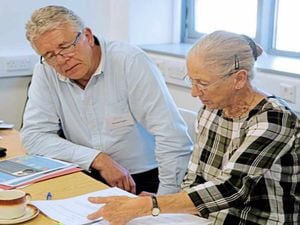Who are you calling ugly?
I AM SAILING in even greater luxury on three cruises this summer after my ship, Minerva, underwent a multi-million pound refit during the winter.

I AM SAILING in even greater luxury on three cruises this summer after my ship, Minerva, underwent a multi-million pound refit during the winter.
Indeed, I was invited onto the first cruise after she came back into service and delighted in the new facilities including Orpheus Lounge (which is more like a wildlife hide with a bar) and an enlarged observation area for pre-breakfast birdwatching sessions (actually a sun deck).
We sailed into problems on the first day, however, having to divert into Brest due to an intense storm in the Bay of Biscay.
The ship lost 36 hours of her schedule and even after cutting out a tour of Oporto, we were a day behind.
However, most ports could reschedule our visit and we had a spare day at the end of the cruise as we approached Madeira. It was a good plan B.
But then we heard from Casablanca: they could not take us on the new date. We were off to Agadir instead.
'I know Agadir,' I suggested to the excursions manager. 'I've led land-based tours there and could do an exciting wildlife excursion in wonderful scenery looking for one of the rarest birds on Earth, the bald ibis.'
A telephone meeting was set up between me and head of planning Saskia Vrolyk back in the Southampton headquarters.
'What's the bird's name?' she asked.
'Bald ibis,' I replied. There was a pause.
'Northern or southern?' came the reply. Saskia was clearly looking things up as we spoke.
'Northern,' I said. There was another pause.
'It's ugly!'
'Not really, and it speaks well of you...'
The trip was on. I could have a coach, a maximum of 30 people and we would drive out to Cap Rhir, about 30km away from Agadir. A coffee stop was possible in Tamri and a careful search of the coastal sand dunes to the north would be mounted.
All I had to do was get a few passengers interested.
A mention of the trip at one of my formal lectures, with a story about how I took another group of passengers 'twitching' the St Helena wirebird, was enough. We had the required number shortly afterwards.
We had a stop in Lisbon first, which proved interesting, as two lesser black-backed gulls with white rings on one leg, each with readable letters, were spotted on the quay.
I hoped they might be from the Channel Islands scheme run by my great friend Paul Veron, who is studying the birds, so I phoned him in anticipation.
The answer came back a day later. One was ringed in Belgium in 2009, the other in Iceland a year earlier. Both had travelled further than the ship.
We went ashore for excursions to the city and Jeronimo's Monastery, the Gulbenkian Museum (which received rave reviews) and the Azulejo Museum. I went on one of the buses as far as the Monument to the Discoveries and spent the morning pointing out birds to our interested passengers on each bus as they came in.
The Agadir visit came three days later after a stop in Cadiz. This was my big moment.
We hit gold with the excursion to Cap Rhir. As the coach drew level with the lighthouse, a group of bald ibis flew past us. No searching... they just flew into view.
They settled on the surrounding semi-desert and began to feed in front of our eyes. This was amazing.
All we had to do was get out of the bus and watch.
Nevertheless, so excited was I that my dear old (lucky) protective hat was abandoned on the bus, and an hour spent in quite strong sun.
We saw at least 12 ibises around the stopping point and watched them feed hungrily, some flying low over our heads. Their iridescent plumage, spiky neck-plumes and long red beaks made them both interesting and far from ugly.
It was worth abandoning the hat, for we were able to see other desert birds as well.
Moussier's redstart was a prize, despite being quite common. As if the male's beautiful, brick-coloured body with black upperparts, heavy white eye-stripe and white patch on the wing were not sufficient to make the bird stand out, its habit of perching conspicuously on top of cactus plants was most obliging.
Greater short-toed larks were feeding between the desert stones, one group in the company of trumpeter finches. Black wheatears were difficult to see but perched helpfully above the vegetation and Sardinian warblers rattled out their alarm calls as we passed.
Crested larks were common, but a picture of one taken by a passenger later showed that Thekla larks were also present.
It was a triumph.
Eventually we returned to the bus in buoyant mood and drove to the nearby town of Tamri for a celebratory coffee and comfort stop. More birds were seen from the café's terrace, among them house buntings, bulbuls and more black wheatears.
Close inspection of a picture taken by John Plummer revealed a pair of Barbary ground squirrels, an animal endemic to Algeria and Morocco, which were playing on a rock-face below the café.
Returning towards the lighthouse, we stopped at Tamri lagoon, where a number of marsh birds were seen or heard.
These included rare and endangered Audouin's gulls, little egrets, spoonbills, singing Cetti's warblers and an unexpected pair of ruddy shelducks.
We returned, jubilant, to Minerva and met later in the day to share pictures and celebrate.





